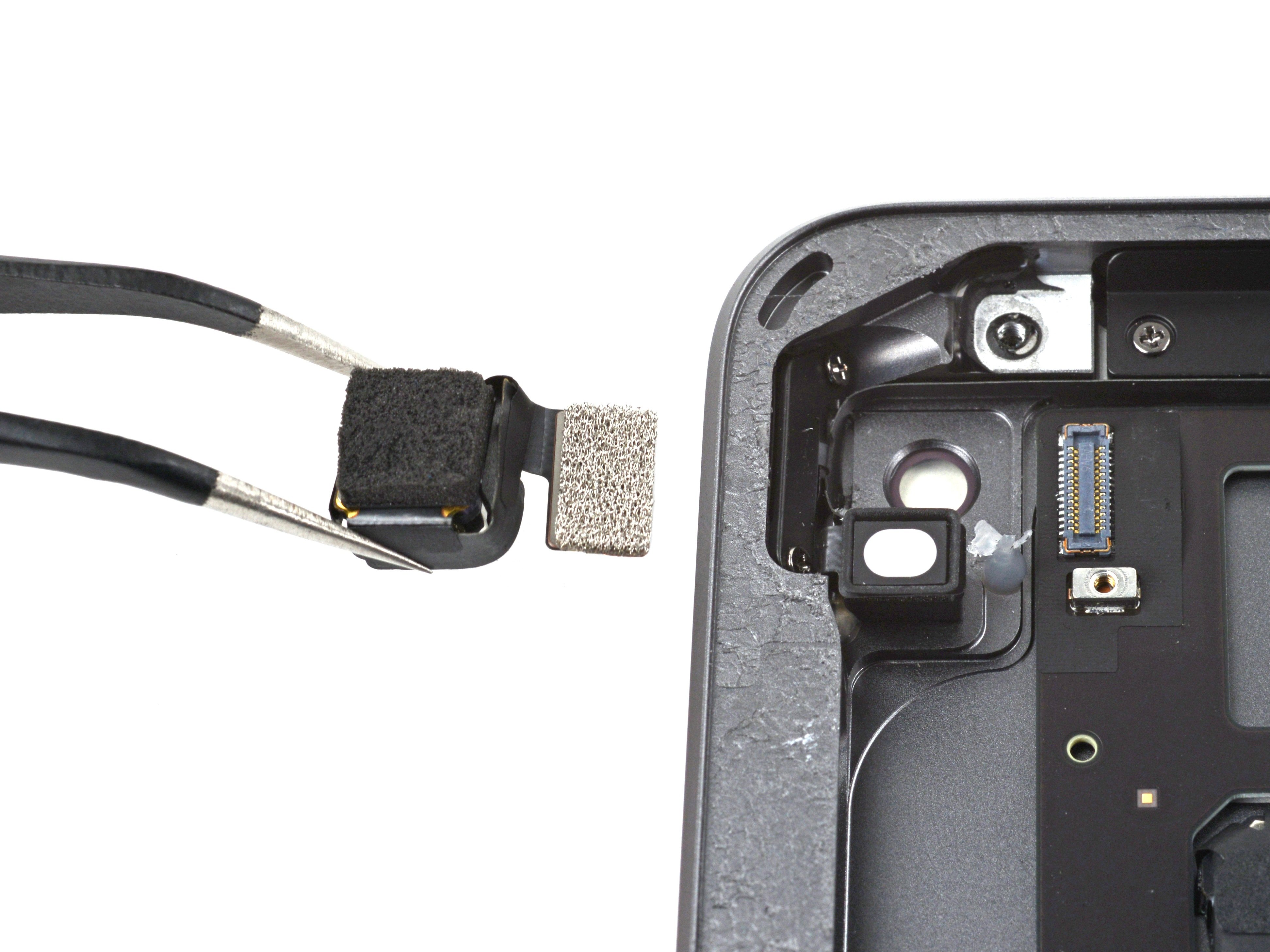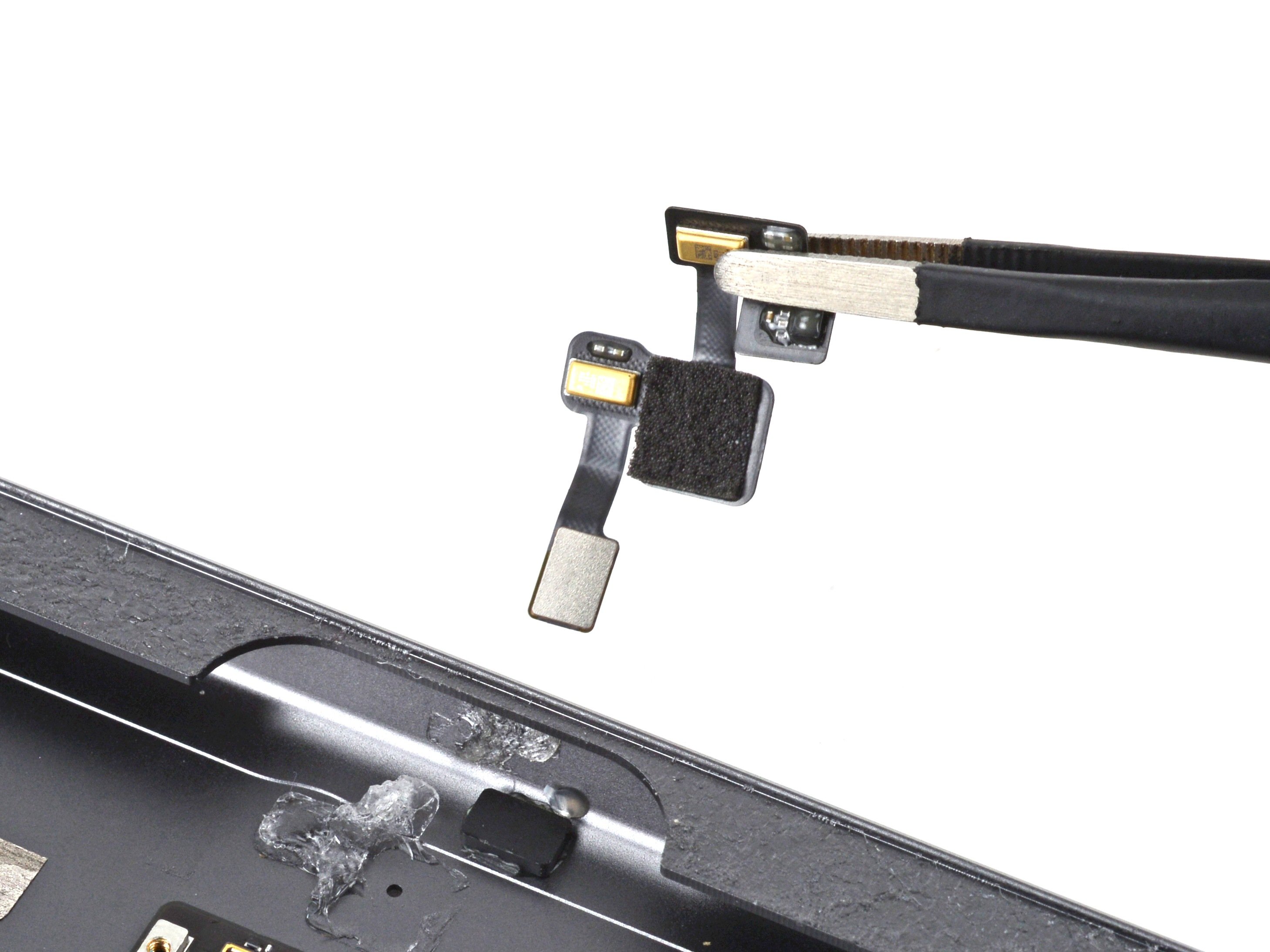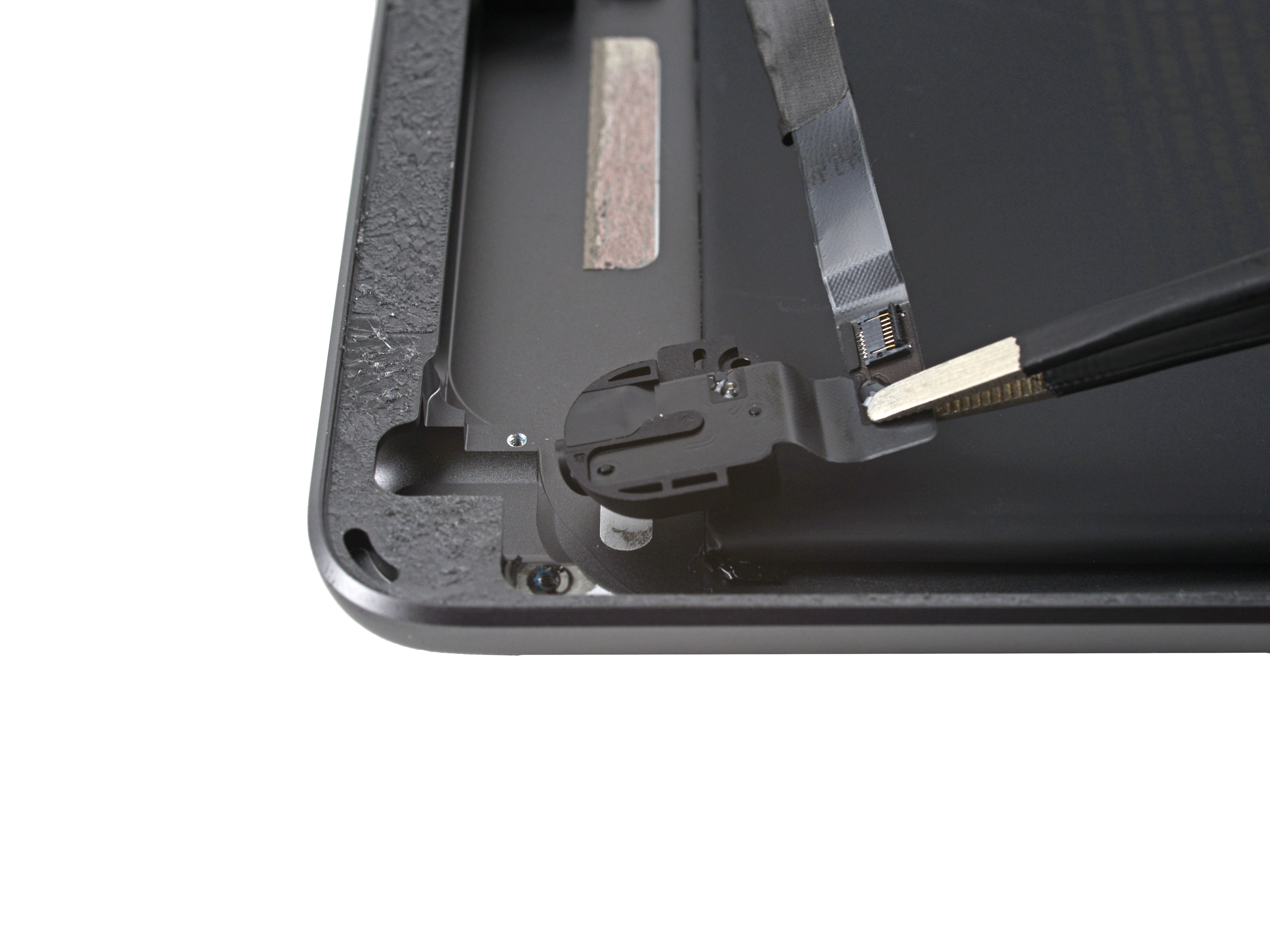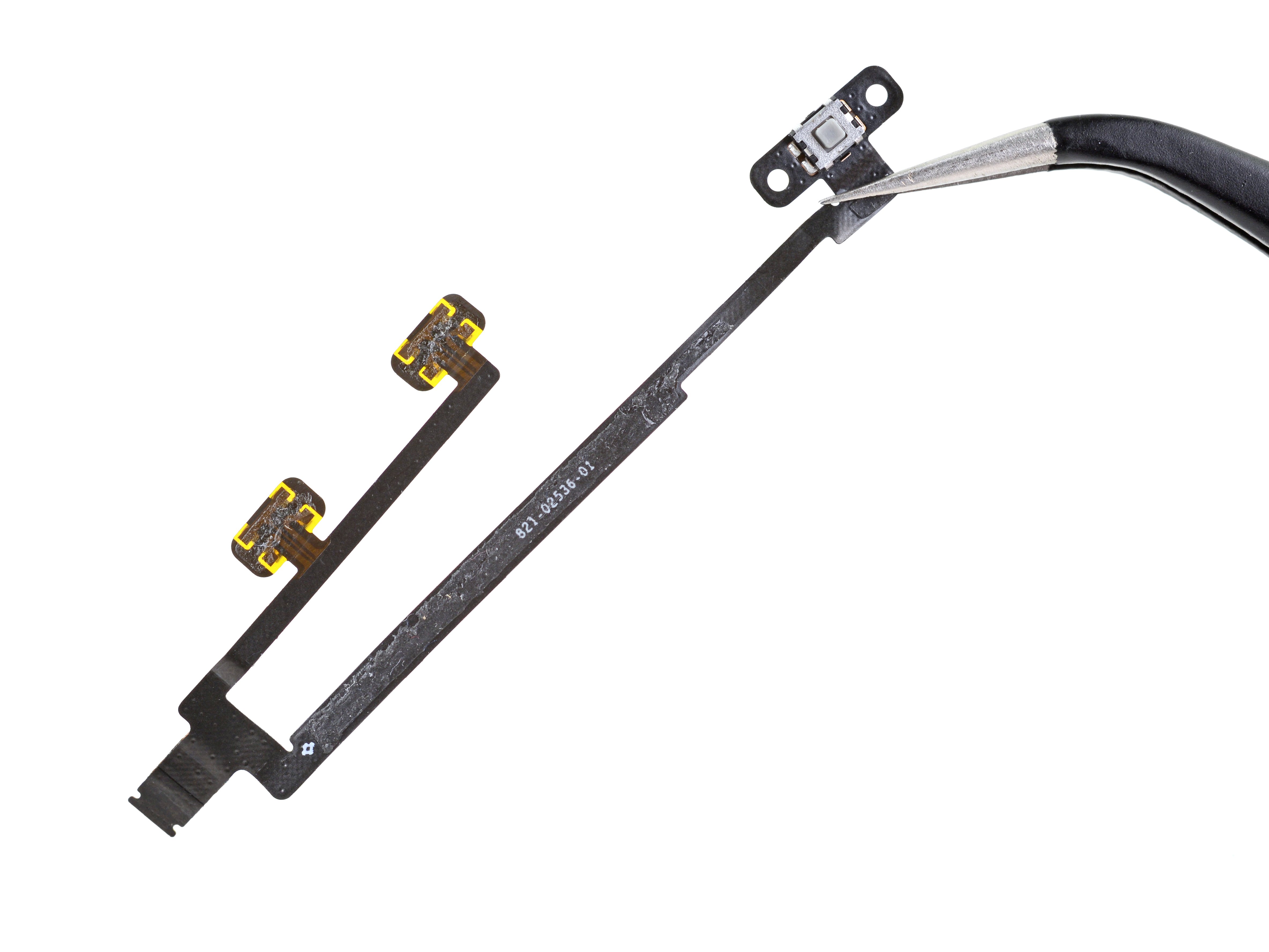How to Replace iPad GSM Rotation Lock Mute Switch
Duration: 45 minutes
Steps: 67 Steps
Heads up! Make sure to handle your device with care during this process. A little caution goes a long way in keeping your tech safe and sound. If things get tricky, just remember, you can always schedule a repair for expert help!
Ready to give your device a little upgrade? Let’s tackle that rotation lock/mute switch replacement together! Follow along, and if you hit a snag, remember, you can always schedule a repair.
Step 1
Before diving into the repair, give your microwave a little TLC! A quick clean can prevent any pesky residue from sticking to the iOpener. Trust us, your future self will thank you!
– Pop that iOpener right in the middle of the microwave and let it warm up!
Tools Used
Step 2
Hey there! Just a friendly reminder to keep an eye on the iOpener during your repair adventure. If it gets too hot, it could pop like a balloon! So, let’s keep the heat below 100˚C (212˚F).
If the iOpener starts looking a bit puffy, steer clear of it, okay?
If the middle of the iOpener is still too toasty to handle, just hang tight and let it cool off a bit more before you reheat it. A properly warmed iOpener should stay cozy for about 10 minutes.
– Warm up your iOpener for thirty seconds to get it nice and toasty.
– As you work through the repair, don’t forget to give your iOpener a quick reheat in the microwave for another thirty seconds whenever it starts to cool down.
Tools Used
Step 3
The iOpener can get pretty toasty, so watch your fingers! An oven mitt might come in handy.
– Carefully take the iOpener out of the microwave, gripping it by one of the flat ends to steer clear of that hot center. Stay cool while you tackle this repair!
Tools Used
Step 4
If you’re not rocking a microwave, here’s a quick tip: warm up your iOpener in some boiling water instead!
– Grab a pot or pan and fill it up with enough water to give your iOpener a nice, cozy bath.
– Turn up the heat and bring that water to a rolling boil. Once it’s bubbling, go ahead and switch off the heat.
– Gently lower the iOpener into the steamy water for about 2-3 minutes. Make sure it’s completely submerged so it gets all warmed up.
– Using some tongs (safety first!), carefully take the hot iOpener out of the water.
– Give the iOpener a good towel dry—no one likes a soggy iOpener!
– Voila! Your iOpener is all set and ready to roll! If it needs another round of heat, just repeat the boiling and soaking process for 2-3 minutes.
Tools Used
Step 5
– Grab your trusty SIM eject tool or a straightened paperclip, and give that SIM tray a gentle nudge to pop it out. You’ve got this!
Step 6
– Gently slide the SIM tray out from its cozy little spot and give it a friendly farewell as you remove it from the iPad.
– If you’re swapping out the SIM card, just give it a little nudge to pop it out of its tray and slide in the new one like a pro.
Step 7
Put on those safety glasses to keep your peepers safe, and watch out for that LCD screen—let’s keep it in one piece!
– If your display glass is cracked, let’s keep those shards in check and avoid any ouchies while you work your magic by taping it up.
– Grab some clear packing tape and lay down overlapping strips over the iPad’s display until the whole surface is nicely covered.
– Follow the rest of the guide as best you can. Just a heads up: once the glass starts cracking, it might keep going as you proceed. You may find it handy to use a metal prying tool to help scoop out the glass.
Step 8
Just a friendly reminder: while you’re tackling this repair, you might be dealing with some tricky broken glass. So, why not keep those peepers safe and sound? We highly recommend rocking a pair of safety glasses to shield yourself from any unexpected flying bits. Stay safe and repair on!
– Place the iOpener flat against the right edge of your iPad, making sure it’s snug and cozy for a solid connection between the iPad and the iOpener.
– Give it a little time! Let the bag chill on the iPad for about 90 seconds before you dive into opening that front panel.
Tools Used
Step 9
Getting that wedged tip of the opening tool in between the glass and plastic might take a bit of elbow grease! Just take your time and stay cool, gently wiggling the plastic opening tool back and forth as needed. You’ve got this!
– Notice that there’s a tiny gap in the iPad’s adhesive ring located in the upper right corner, about 2.0 inches (~5 cm) from the top. Let’s take advantage of this little opening!
– Grab your tool and line it up with the mute button. Gently slide the tip of a plastic opening tool into the gap between the front glass and the plastic bezel. Just dip in the very tip of the tool, enough to widen that crack a bit.
Step 11
– With the plastic opening tool snugly placed between the front glass and the plastic bezel, gently slide a plastic opening pick into that little gap right alongside the tool. You’re doing great!
Step 12
– Gently take out the plastic opening tool from the iPad, then slide the opening pick a bit further under the front glass, aiming for about 0.5 inches deep. You’ve got this!
Step 14
The adhesive is really strong, so you might need to put in some muscle. Take it slow and steady!
If you can spot the tip of the opening pick peeking out from beneath the front glass, give it a gentle tug. While having the pick inserted this deeply won’t cause any harm, it might leave a little adhesive residue on the LCD. Just a heads up!
– While the iOpener is warming up the bottom edge, start peeling back the adhesive from the right edge of your iPad.
– Gently slide the opening pick down along the iPad’s edge, freeing the adhesive as you go. You’ve got this!
Tools Used
Step 15
As you peel away the adhesive, you might need to slide that warm iOpener back to the right edge of the iPad. This little adjustment depends on how long your iPad has been chilling while you’ve been busy working your magic.
– If your opening pick is feeling a bit sticky in the adhesive, just give it a little ‘roll’ along the edge of the iPad to help free it from the glue’s grasp.
Tools Used
Step 16
– Before you pop that first opening pick from the bottom corner of the iPad, slide a second pick under the right edge of the front glass to keep the adhesive from playing tricks and sticking back down.
– Give your iOpener a little reheat love, then position it at the top edge of the iPad. You’re doing great!
Tools Used
Step 17
The Wi-Fi antenna is snugly secured to the bottom right edge of the rear case of the iPad with screws and a cable. Given how the Wi-Fi antenna is positioned, it’s super important to handle it gently to avoid any permanent mishaps with the antenna. So, take your time and be careful!
– Alright, friends, it’s time to tread lightly! The next few steps call for some serious care.
– You’ll need to gently free the adhesive that’s holding the antenna to the front panel. Just be careful not to mess with the fragile parts connecting the antenna to the bottom of the iPad. Take your time and follow these steps closely!
Step 18
Be careful not to slide the pick past the bottom right corner! Doing so might put a little dent in your Wi-Fi antenna, and we wouldn’t want that!
– Gently glide that opening pick around the bottom right corner of the iPad to set the adhesive free. You’ve got this!
Step 19
As you glide that opening pick along the bottom right corner of the front panel, keep in mind that the Wi-Fi antenna is lurking close by. If you accidentally release the adhesive the wrong way, you might just give that antenna a little haircut! So, take it easy and proceed with care.
Just give that pick a little wiggle and don’t pull it all the way out from under the front glass. Leave about 1/8″ (3 mm) of the tip snugly tucked in there for a smooth operation.
– Gently glide the tip of your trusty opening pick along the bottom edge of the iPad, helping to free up that pesky adhesive around the Wi-Fi antenna. You’re doing great!
Step 20
– Now that you’ve gracefully passed the Wi-Fi antenna (about 3″ (75 mm) from the right edge, right near the home button), slide that trusty opening pick back in all the way.
– Gently glide the pick to the right to free the adhesive holding the Wi-Fi antenna to the front glass. You’re doing great!
Step 21
Keep the iOpener’s heating sessions to just a minute at a time, and give it a little break of at least two minutes before you heat it up again. Safety first, friends!
– Keep gently peeling back the adhesive along the bottom of the iPad, making sure to pull the opening pick out far enough to navigate around the home button. Once you’ve successfully bypassed the home button, pop that pick back in to a depth of about 1/2 inch (10 mm).
Tools Used
Step 22
– Keep peeling away that sticky adhesive all along the bottom edge of your iPad like a pro!
– Don’t forget to leave the opening pick snugly in place under the front glass by the home button.
Step 24
If your adhesive has decided to take a little too long to cool, just swap in a fresh iOpener along the top edge and keep on working. And if the iOpener itself has gone a bit chilly, no worries—just give it another heat-up!
– Gently glide the opening pick along the top edge of your iPad, giving it a little tug to navigate around the front-facing camera bracket.
– The adhesive here is quite strong, so don’t be shy about applying some force. Just take your time and be cautious to avoid any slips that could harm you or your iPad.
– If you find the opening pick getting stuck in the adhesive, try ‘rolling’ it as demonstrated in step 9.
Tools Used
Step 25
If the adhesive is feeling nice and toasty, go ahead and take the iOpener off your iPad for easy access. But if it’s still pretty sticky, give the iOpener another warm-up and place it on the left edge while you tackle your task.
– Keep peeling back that adhesive along the top edge of your iPad, and gently work the opening pick around the top left corner.
Tools Used
Step 26
The digitizer cable hangs out about 2″ (50 mm) from the bottom of your iPad. When you’re sliding that pick, stop when you’re about 2.25″ (60 mm) from the bottom. You’re doing great!
– Gently glide the opening pick along the left edge of your iPad, letting the adhesive loosen up as you go. Don’t worry, the adhesive is pretty thin here thanks to the digitizer running along that side. Just keep the pick’s depth in check—no deeper than 1/2 inch (10 mm)—so you don’t accidentally mess with the digitizer. You’re doing great!
Step 27
Be super careful! The bottom of the digitizer cable is only about 1 inch (25 mm) from the iPad’s bottom. Take your time and tread lightly to avoid cutting this cable.
– With that trusty opening pick still nestled under the bottom edge of your iPad, gently peel back the adhesive at the bottom left corner like you’re unveiling a secret treasure!
Step 28
– With one of those nifty opening picks in hand, gently lift the bottom right corner of your iPad and give it a little tug with your fingers.
Step 29
Watch out for any sticky stuff that might still be hanging around! Grab an opening pick and gently slice through any adhesive that’s keeping the front panel in place.
– Grab your iPad by the top and bottom right corners and give that front glass a gentle twist away from the device. It’s like a little dance move for your iPad!
– When you’re putting it all back together, don’t forget to treat your LCD to a little pampering! Use a microfiber cloth and some compressed air to blow away any pesky dust or fingerprints before you lay that glass back down.
Step 30
The bottom left screw is playing hide and seek behind the home button ribbon cable connector. Gently nudge that ribbon cable to the side so you can get to the bottom left screw and show it who’s boss.
– Unscrew the four 2 mm Phillips #00 screws that are keeping the LCD snug against the aluminum frame. You’ve got this!
Step 31
Handle the LCD with care! That ribbon cable is a bit of a delicate flower and can snap if you give it too much of a bend. Keep it cool, and you’ll be just fine!
– Grab your trusty plastic opening tool or spudger, and gently lift the right edge of the LCD out of the iPad. You’ve got this!
– Now, with a smooth motion, rotate the LCD along its left edge and lay it down gently on top of the front glass panel. Easy peasy!
Tools Used
Step 32
– Grab your trusty spudger and gently lift that pesky tape off the LCD ribbon cable connector. You’ve got this!
Tools Used
Step 33
– Lift the retaining flap on the LCD ribbon cable ZIF connector with ease.
– Gently tug the LCD ribbon cable from its cozy home on the logic board using your fingers or some handy tweezers.
– If your iPad is playing hard to get and the LCD screen is still in dreamland after reconnecting the ZIF connector, just hold down the power button and the home button for about ten seconds until you spot the Apple logo making its grand entrance.
Tools Used
Step 34
– Carefully lift the LCD off the front panel without getting your fingers on the screen. You got this!
Step 35
If you see it, go ahead and peel off that pesky piece of electrical tape that’s hiding the Wi-Fi antenna, speaker cable, and home button ribbon cable. You’ve got this!
Step 37
– Grab your trusty tweezers and gently wiggle that home button ribbon cable right out of its cozy socket on the logic board. You’re doing great!
Tools Used
Step 38
– Carefully wiggle the home button ribbon cable out of its cozy little spot in the rear case.
Step 39
– With the spudger’s tip, gently lift the tape holding the digitizer ribbon cable to the logic board. You’ve got this!
Tools Used
Step 40
– Gently lift the retaining flap on both of the ZIF connectors for the digitizer ribbon cable. Let’s get that connection ready for action!
Step 41
– Grab your trusty spudger and gently slide the flat end underneath the digitizer ribbon cable to break the adhesive seal. You’ve got this!
– Once it’s loosened up, carefully pull the digitizer ribbon cable straight out from its cozy home on the logic board. Easy peasy!
Tools Used
Step 42
– Gently lift the digitizer ribbon cable and grab your trusty spudger. Use the flat end to carefully break free the adhesive that’s holding the cable to the rear aluminum case. You’ve got this!
Tools Used
Step 43
– With a gentle tug, use your fingers to pull that digitizer ribbon cable right out of its cozy little spot in the aluminum frame.
– Now, let’s carefully take off the front panel from the iPad.
Step 44
– Gently peel away the electrical tape that’s cozying up to the headphone jack assembly cable connector. It’s time for it to say goodbye!
– Grab your trusty spudger and give a little lift to the retaining flap on both ZIF connectors holding the headphone jack cable to the logic board. You’ve got this!
Tools Used
Step 45
– Gently slide the flat end of a spudger under the headphone jack assembly cable to free it from the adhesive that’s keeping it snug against the rear aluminum frame.
– Carefully pull the headphone jack assembly cable straight out of its cozy home on the logic board.
Tools Used
Step 46
– Gently peel off the tape that’s keeping the SIM board cable ZIF connector under wraps.
– Lift the little retaining flap on the SIM board cable ZIF connector with a smile.
– With your trusty spudger, carefully pull the SIM board cable straight out of its cozy socket on the logic board.
Tools Used
Step 47
– Carefully take out those three 1.75 mm Phillips #00 screws holding the SIM board snugly against the aluminum frame. You’ve got this!
Step 48
As you gently move the headphone jack assembly cable aside, remember to take it easy on the headphone jack itself—yanking too hard might just send it packing!
– Gently set the headphone jack assembly cable aside and carefully pop out the SIM board from your iPad. You’ve got this!
Step 49
– Gently peel back the adhesive tape that’s snugly hugging the headphone jack assembly and say goodbye to that sticky situation!
Step 50
– Carefully take out the lone 2.6 mm Phillips #0 screw that’s keeping the camera cable snugly attached to the headphone jack assembly. You’ve got this!
Step 51
– Grab that trusty flat end of your spudger and gently nudge the front-facing camera out of its cozy little socket on the headphone jack assembly. You’ve got this!
– Now, without letting go of the spudger, give it a little slide to the right. This will help you free the adhesive that’s been keeping that camera cable in place. Easy peasy!
Tools Used
Step 52
– Grab your trusty spudger and gently lift the retaining flap on that microphone cable ZIF connector. You’ve got this!
– Now, slide the tip of the spudger under the microphone ribbon cable and pop it out of its ZIF connector. Easy peasy!
– Give that spudger a little wiggle to the left to break the adhesive that’s keeping the microphone ribbon cable cozy with the headphone jack assembly. You’re almost there!
Tools Used
Step 53
– Grab the flat end of your trusty spudger and gently wiggle it under the antenna connector cable. Lift it out of its cozy spot on the headphone jack assembly board with care!
Tools Used
Step 54
– Gently lift the little flap that’s holding the volume/power button ribbon cable connector in place on the headphone jack assembly board.
– Carefully detach the volume button ribbon cable from its ZIF connector.
Step 56
– With a gentle grip on the ribbon cable of the headphone jack assembly, smoothly pull the assembly parallel to the iPad, guiding it toward the bottom of the device. Remember, take your time and enjoy the process!
Step 57
– With both hands, give a gentle but firm grip on the headphone jack assembly and carefully pull it away from the iPad, keeping an eye out for any sneaky cables that might try to hitch a ride.
Step 58
The two screws perched on top are tilted into the aluminum frame. Remember to keep your screwdriver aligned with the screw for a smooth operation!
– Unscrew those pesky screws holding the power and volume button cable to the aluminum frame. You’ve got this!
Step 60
– Unscrew the lone 2.6 mm Phillips #00 screw that’s keeping the volume button frame snug against the aluminum frame. Let’s get that frame free!
Step 61
– Gently slide the edge of a plastic opening tool beneath the sleep/wake sensor—just be cautious not to harm that delicate cable.
– Carefully glide the plastic opening tool around the sensor to free it from the sticky adhesive.
Step 63
– Gently use the tip of the spudger instead of the wide edge to carefully lift the adhesive under the volume button section of the ribbon cable. You’re doing great!
Tools Used
Step 65
– With the spudger’s tip still cozy under the ribbon cable, gently coax the power button out of its snug little home in the aluminum frame.
Tools Used
Step 66
– With a steady grip on the power & volume button cable, gently coax the volume buttons and lock switch out of their cozy spots in the aluminum frame. You’ve got this!
– Now, lift and slide the power & volume button cable out of the rear aluminum case like a pro. You’re making great progress!

















































































































































